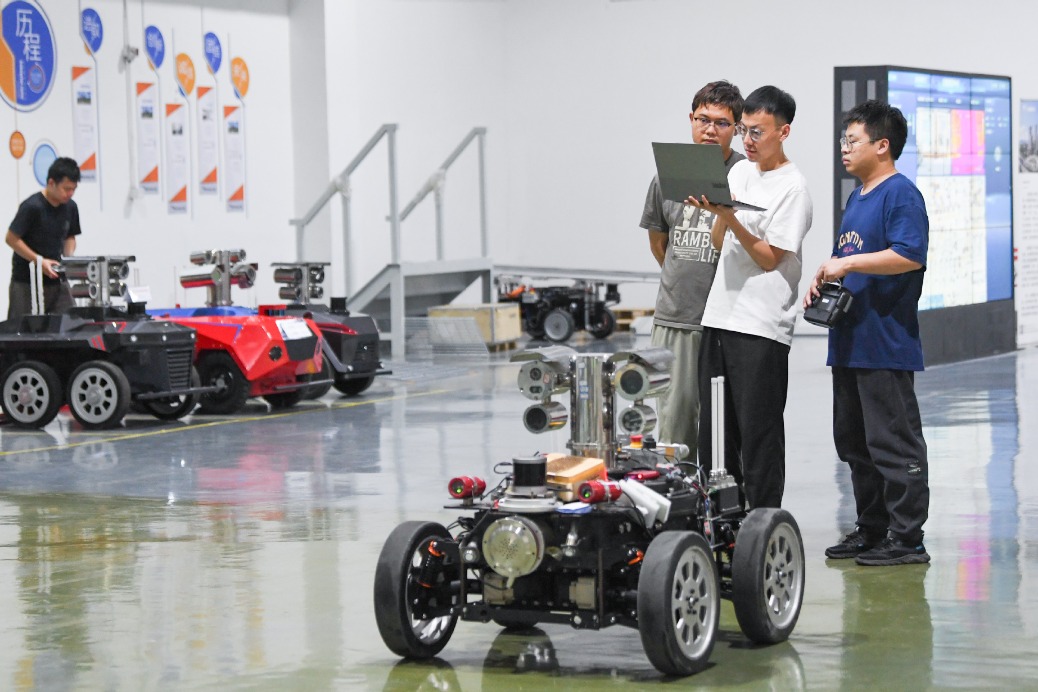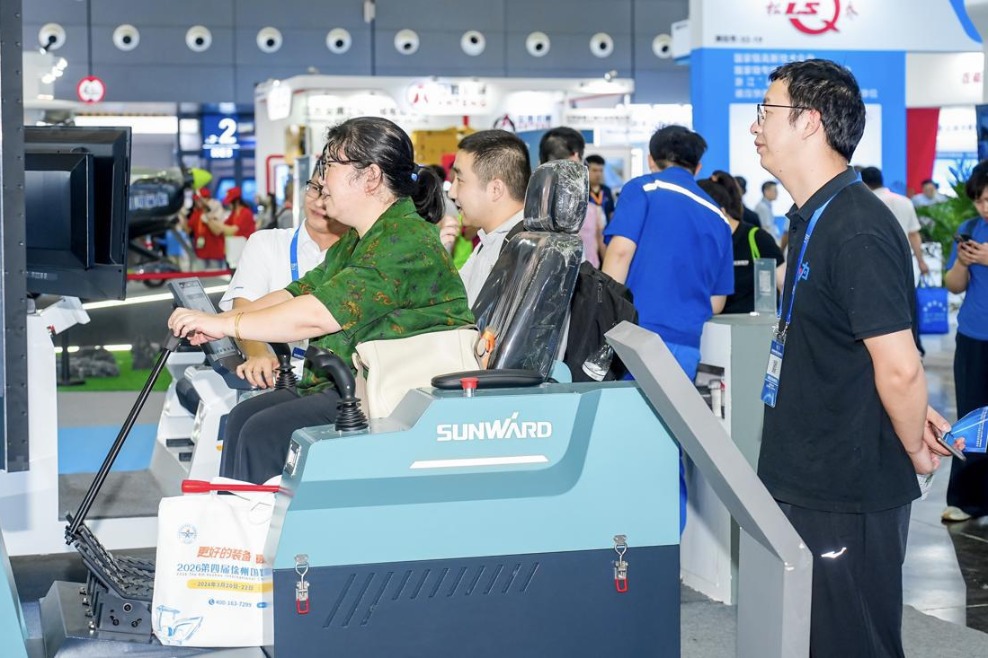Total factor productivity growth a telling metric


Over the past quarter-century or so, the world has grappled with the challenge of inadequate total factor productivity growth.
When using the TFP growth rate as a metric, it becomes apparent that despite having the world's leading research and development capabilities, most robust investment in basic research, and a relatively comprehensive industrial system, the United States has had a TFP growth rate of only about 0.5 percent over the past two decades.
This helps explain why the US has registered a long-term economic growth rate of merely 1.5 percent to 2 percent.
Countries such as Japan, South Korea, Germany, the United Kingdom, France and Italy, which have already undergone industrialization, are also experiencing insufficient growth in TFP.
The fundamental rationale behind this phenomenon is that during the industrialization era, the economies of scale associated with mass production led to significant cost savings and technological applications, which in turn created substantial room for growth.
Following the completion of industrialization, the services sector typically expands in size. However, it is largely labor-intensive, making it more difficult for the sector to enhance TFP.
China mostly completed its industrialization process in 2010, a milestone year in which it surpassed the US and Japan to become the leading global manufacturer in terms of value added and total production.
Our calculations show that China's average annual growth rate in TFP declined from a previous 4 percent to 1.8 percent between 2010 and 2019. Some other scholars, using varying methodologies and measurements, have placed the figure at around 1.3 percent.
Typically, TFP accounts for approximately 40 to 50 percent of economic growth. If the growth rate of TFP were to fall to just 1.8 percent, it would suggest that the long-term economic growth rate would be at 4 percent or lower.
From this perspective, some scholars, including those living abroad, have put forward the "peak China" theory based on the argument that China has completed its industrialization.
However, China differs from the US in many ways. China's manufacturing currently accounts for 27 percent of GDP and about 30 percent of global manufacturing output, whereas the manufacturing sector in the US makes up only 11 percent of its GDP. China still has an advantage in terms of its TFP growth rate.
Every industry can be transformed and revitalized during energy transition and digitalization. Second, the advancement of the digital economy and carbon neutrality is backed by massive investment.
If China is to achieve carbon neutrality before 2060, the estimated investment scale can be more than 300 trillion yuan ($41.55 trillion). This means an average annual investment of nearly 10 trillion yuan over the years leading up to 2060. The decline in real estate investment can be fully offset by investment in emerging industries.
China's edge in infrastructure development is largely attributable to its "government plus market" approach. Critical sectors like high-speed railways and expressways often lead to low capital returns. Our estimates suggest that the rate of return on capital is only around 2 percent, which makes it unattractive for private capital.
Yet, social benefits from infrastructure investments are substantial. It's undeniable that the advent of high-speed railways has spurred an extensive industrial chain, providing enormous growth opportunities for many enterprises and industries in both upstream and downstream segments.
Over the course of more than 40 years of reform and opening-up, China has made significant investments in infrastructure, which has had a strong stimulative effect on the nation's economy.
The key lies in the way private capital and State-owned capital — or the market and the government — find their respective areas of strength, ultimately forming a powerful investment intensity and investment rate that have propelled China through the process of industrialization.
Will China's TFP growth rate recover to above 2 percent, driving us to maintain a 5 percent GDP growth over the next decade or two? I am quite optimistic.
Faced with the global challenge of insufficient productivity, the Chinese government has devised a comprehensive strategy centered on developing new quality productive forces.
This strategy involves revolutionary transformation in technology, the synergy of technological and industrial innovation, innovative allocation of production factors, and the transformation and upgrade of traditional industries — all aimed at boosting TFP and carving out a path distinct from that of European and North American economies. We think that, in theoretical terms, this represents a systematic approach to addressing global shortfalls in growth.
First, China's manufacturing sector needs to transition toward equipment manufacturing, which will generate numerous investment opportunities and enhance TFP.
Second, digitalization, energy transition and a "reindustrialization" process will generate numerous investment opportunities and a potential boost in TFP.
Thus, at the infrastructure level, with the process of digitalization, new energy and reindustrialization, there is a need for "new infrastructure", including 5G, 6G and future-oriented computing power. Investments in those fields will be enormous, bringing the possibility of rising TFP.
Also, high-standard opening-up and deeper institutional reforms will create immense room for improvement in resource allocation efficiency, leading to an increase in the growth rate of TFP.
Due to the aforementioned factors, China is still able to maintain a TFP growth rate of around 2 percent, compared with other countries that have completed industrialization.
This presents a different economic outlook from theories like "peak China".
The significance of China's successful transformation from investment and production factor-driven economic growth models to a more balanced TFP-driven model is substantial.
What do new quality productive forces mean for businesses?
The path to new quality productive forces involves expanding into industries and fields that can enhance TFP and form new quality productive forces. There are two paths to achieving this objective.
The first route involves leveraging revolutionary technological changes to foster strategic emerging industries and future endeavors. This includes sectors associated with energy transition and digital transformation, as well as future-oriented industries like quantum computing and AI-driven big data. These will create new momentum, aiding in the acceleration of TFP growth.
The second path involves opportunities brought about by China's transformation and upgrade of traditional industries. Currently, the productivity in China's agricultural and services sectors, for example, is relatively low, offering significant potential for increasing TFP. This in itself is a source of new quality productive forces, as it represents innovation in the mode of development.
When we move toward development of new quality productive forces, the direction is clear, which is to follow the philosophy of "building before breaking".
"Building" refers to the promotion of new areas, new growth tracks and new industries that can help increase the growth rate of TFP. By creating new consumption and demand, it boosts people's confidence in the future.
The views don't necessarily reflect those of China Daily.
The writer is a professor of finance and dean of Peking University's Guanghua School of Management.




































